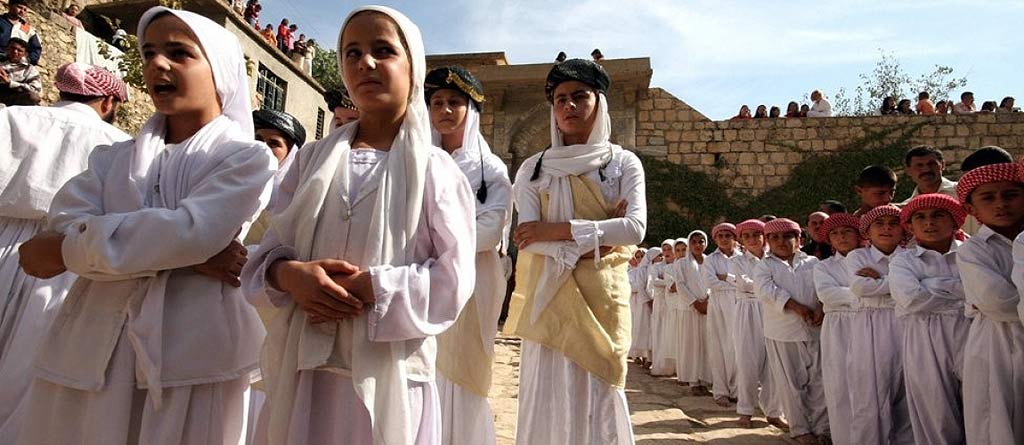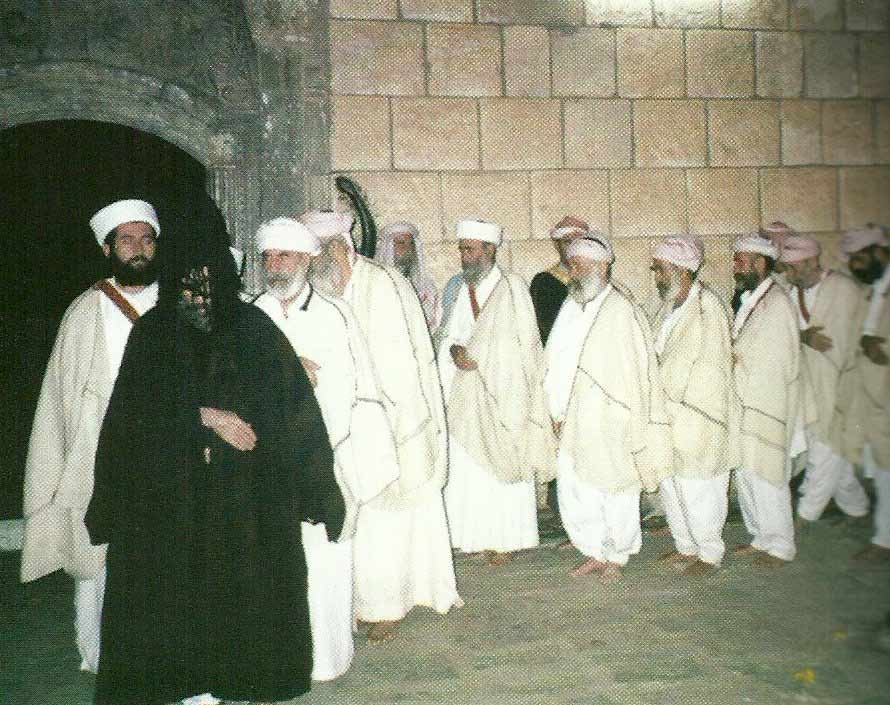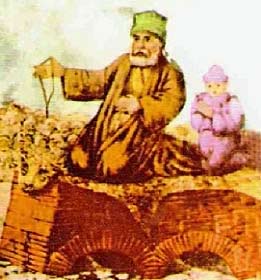
|
|||||||
|
| |||||||
Roji and Eda Rojia: The Three Day Fast of DecemberYezidis and their Fast Days of December
by Nallein Satana al-Jilwah SowiloThe Three Day Fast of December is one all Yezidis are expected to observe. Fasting occurs from dawn until sunset, and the nights are given to feasting, merry making and some prayer. The week long fast of December is the most important Yezidi fast. It occurs between the first and 8th of December, but most modern Yezidi only celebrate three days of fasting starting on the first Friday of December, when all Yezidis make hadji to Lalish to witness the birth of the Sun (Melek Taus) and to give thanks for blessings received. The festival of Belenda occurs on first of December, the anniversary of Ezid or Yazid, the original and invisable supreme God, who took birth on this night as Yazid divine king of Yezidis. Yezid is an aspect of Melek Taus and is viewed as original source of God from whom Melek Taus manifested. A Feast to the Dead held on 10th of December is mentioned in older sources, but its observance is now associated with Belenda. The last three days of this festival are associated with the Yazdâni Sultan Sahak, an early saint of the Yezidis. The occasion is generally said to be commemotation of three days that Sultan Sahak spent in a cave when pursued by evil djinns, while the feast celebrates his release.
A another story claims that the seven holy figures (rainbow angels) were dead for three days and came to life again. Throughout the week long event, fasting is observed from dawn until sunset. The nights are given to feasting and prayers to the moon. During the Three Day Fast of December there are rites of baptism for children as well as for holy objects of sanjaks in spring water of Zam Zam or of the White Spring. Silk cloths representing the seven rainbow angels are place as covering on their tombs. Each night of festival a dance is performed in court yard of Lalish in honor of the rebirth of the Sun, fourteen Qawali dancers dressed in white, the color of purity, dance to music of Qawals (minstrel-magicans). They dance around a sacred torch that represents both the sun and supreme god Melek Taus. The dancers are led by the head of the Faqirs, who dresses in black. 
|
|

